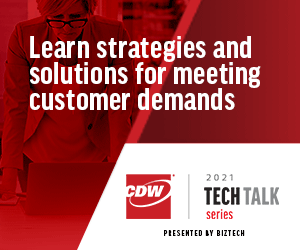For years, higher education institutions across the nation have been turning to analytics to manage unpredictable enrollment and rising recruitment costs. According to a report by the EDUCAUSE Center for Applied Research, 69 percent of post-secondary schools were already using some form of data analytics as early as 2012.
Although graduate enrollment increased by 4.3% compared to spring 2020, the pandemic and a constrained federal budget have introduced new uncertainties for university enrollment in the years ahead.
In a private press panel convened by Othot earlier this year, higher education leaders from Arkansas Tech University, Ashland University in Ohio and St. Mary’s College of Maryland gathered to share how data analytics has helped them buffer unpredictable enrollment at their respective institutions.
The Difference Between Descriptive and Diagnostic Data Analytics
Before discussing specific enrollment strategies, members of the panel explained it was important to understand that data analytics is divided into two tiers. There’s descriptive analytics, which describes the incident, and there’s diagnostic analytics, which clarifies why it happened.
Descriptive analytics, for example, can be used to describe the demographics of students who recently visited campus, while diagnostic analytics could track whether those students visited in response to a particular event.
Using Predictive vs. Prescriptive Data Analytics for Enrollment
In the next step up, there is predictive and prescriptive analytics. Predictive analytics helps colleges and universities predict the likelihood of a certain outcome. It uses descriptive and diagnostic analytics to further the probability of that desired outcome.
For example, if your student analytics indicates a visiting high school graduate is 30 percent likely to enroll, you’d use prescriptive analytics to maximize that possibility. Your plans could involve financial aid, an innovative marketing program, direct mail or a personal phone call.
It can help institutions achieve a desired outcome and track its success.
RELATED: Learn how data analytics helped Millersville University reopen campus.
Why Predictive Analytics is Important to Enrollment
Blake Bedsole, vice president for enrollment management at Arkansas Tech, described how his university used predictive analytics to decide how to target their marketing — “whether that’s completing an application or coming to campus to take a visit.”
The university sought to capture the attention and interest of a qualified set rather than “scatter the spaghetti on the wall and see what sticks.”
In Maryland, St. Mary’s College tracked the number of students who visited campus and where they came from. The university realized that if a student was able to visit campus, he or she was far more likely to enroll, particularly at a time when a large number of students remained closer to home.
With this context in mind, St. Mary’s College put effort into giving visiting students personalized campus tours, with a 9 to 1 student-to-faculty ratio. “I think these tours helped contribute to the increase in our applicant pool, because we were able to see more students visiting campus that way and deliver a more on-brand experience,” says David Hautanen, vice president for enrollment management at St. Mary’s.
Meanwhile, Arkansas Tech used data to position itself as a Hispanic-Serving Institution (HIS) to service and attract its growing Hispanic population.
MORE ON EDTECH: Here are 3 ways that AI can improve student success during online learning.
Using Data Analytics to Improve Student Success
Ashland University, Arkansas Tech and St. Mary’s College all used analytics to track student attendance and participation rates in both virtual and in-person classes — and to make subsequent adjustments for student success.
Bedsole of Arkansas Tech mentioned that analytics measured his university’s changing demographics, and this helped disburse financial aid to students in need.
St. Mary’s College also employed analytics to improve understanding of its students’ needs-based programs, as well as the college’s marketing campaigns.
Sometimes, analytics not only helps increase university admission but also helps individuals who otherwise would not have a good chance at graduating. That was the case with Georgia State University, known for eliminating achievement gaps between low-income and upper-income students.
As Tim Renick, executive director of the National Institute for Student Success, noted in a 2020 interview with the University Innovation Alliance that he used analytics to retain 98 percent of Georgia State’s student membership at the height of the pandemic. Renick previously led student success efforts at Georgia State.
Other Uses for Data Analytics in Higher Ed
At Ashland University, administrators invited the local community to town hall meetings, where parents, students and the broader community were encouraged to ask questions and voice concerns.
According to Keith Ramsdell, vice president for enrollment management and marketing at Ashland, the analytics showed the results were “remarkable” and the project was “exceptionally well-received.”
In each case, colleges and universities used analytics to improve their understanding of situations, test possible solutions and track results. Applications were used across campus in marketing, recruitment, admissions decisions, financial aid, student advising, academic planning, financial forecasting and even executive planning.














